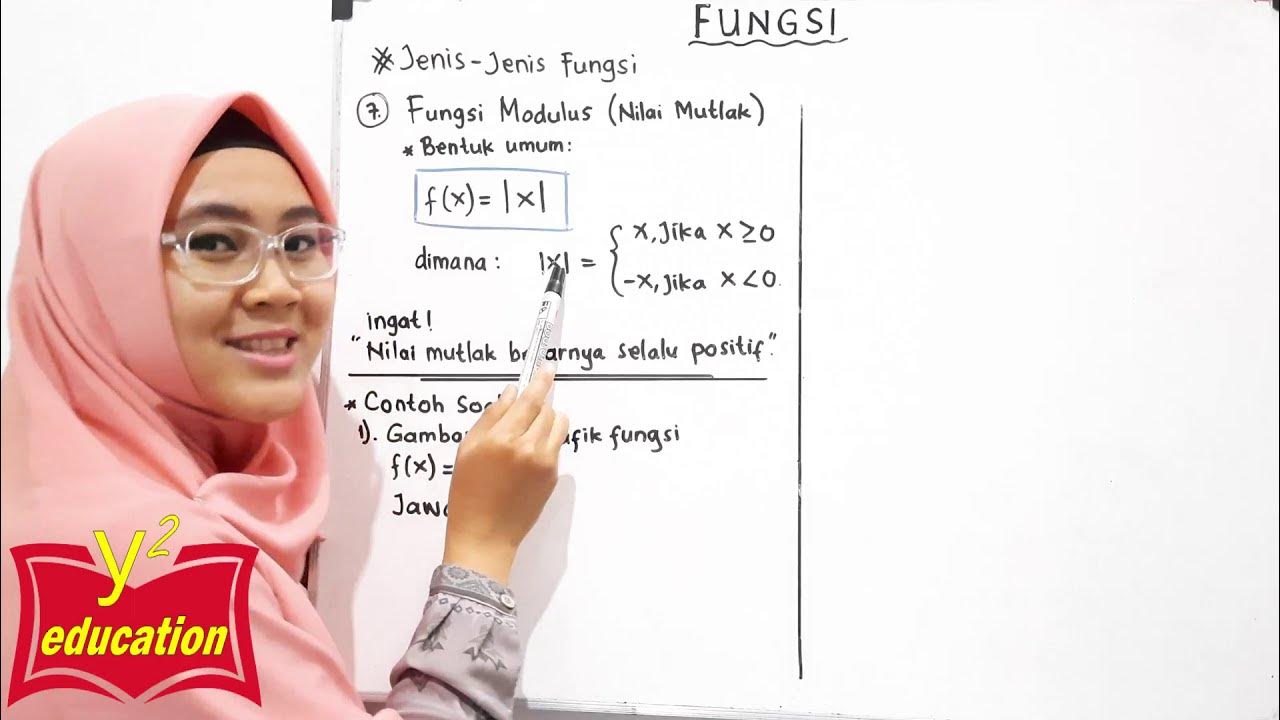Injective Surjective Bijective Functions
Summary
TLDRThis video explains the concepts of injective, surjective, and bijective functions. It starts by introducing the basic idea of functions, domains, and codomains. The video then defines injective functions (one-to-one) where each output corresponds to one unique input, and surjective functions (onto), where every element in the codomain is covered by at least one output. Bijective functions combine both properties. The video uses visual diagrams and examples, including linear and quadratic functions, to illustrate how to test these properties using the horizontal line test and other methods. It concludes by offering real-world analogies to solidify understanding.
Takeaways
- 😀 A function maps elements from a domain to a co-domain, with each input having a unique output.
- 😀 The **range** of a function is the set of actual outputs, while the **co-domain** represents all possible outputs.
- 😀 A valid function does not allow an input to map to two different outputs at the same time.
- 😀 An **injective (one-to-one)** function means every output is the image of a unique input, passing the horizontal line test.
- 😀 A **surjective (onto)** function means every element in the co-domain is used as an output, making the range equal to the co-domain.
- 😀 An **injective** function passes the horizontal line test, meaning a horizontal line intersects the graph at most once.
- 😀 A **surjective** function ensures the range and co-domain are identical, covering all possible output values in the co-domain.
- 😀 A **bijective** function is both injective and surjective, establishing a perfect one-to-one correspondence between domain and co-domain.
- 😀 A function can be **injective** but not **surjective**, **surjective** but not **injective**, or both, but only when both conditions are met is it **bijective**.
- 😀 The horizontal line test is essential for testing if a function is injective: if a horizontal line crosses the graph more than once, the function is not injective.
Q & A
What is the difference between a function's co-domain and its range?
-The co-domain represents all the possible outputs of a function, while the range consists of the actual outputs that the function produces. In other words, the co-domain includes all potential outputs, but the range only includes the outputs that the function actually maps to.
Can a function have multiple inputs mapping to the same output?
-Yes, a function can have multiple inputs mapping to the same output. This is perfectly valid, as seen in the example where both 2 and -2 map to 4 in the function f(x) = x^2.
What is an injective function?
-An injective function (or one-to-one function) is a function where every output is the image of a unique input. In other words, no two distinct inputs map to the same output.
How can you visually test if a function is injective?
-To visually test if a function is injective, you can use the horizontal line test. If any horizontal line drawn across the graph of the function intersects the graph at more than one point, the function is not injective.
What does it mean for a function to be surjective?
-A surjective function (or onto function) is a function where every element of the co-domain is mapped to by at least one element of the domain. This means that the range and co-domain are the same.
How can you tell if a function is surjective using a graph?
-A function is surjective if every element in the co-domain has an output. On a graph, this means that the function covers the entire vertical range of the co-domain, without any gaps.
What is a bijective function?
-A bijective function is one that is both injective (one-to-one) and surjective (onto). In other words, every output is the image of a unique input, and every element in the co-domain is used as an output.
Why is a function that is neither injective nor surjective not bijective?
-A function that is not injective or not surjective fails to meet the criteria for bijection. For it to be bijective, the function must be both injective (each output must have a unique input) and surjective (every element in the co-domain must be mapped to by some input).
Can a function be surjective but not injective?
-Yes, a function can be surjective but not injective. This occurs when every element in the co-domain has at least one corresponding input, but multiple inputs may map to the same output, thus violating the uniqueness requirement of injectivity.
What is the significance of the horizontal line test for a quadratic function in determining injectivity?
-For quadratic functions, the horizontal line test shows that they are not injective. A horizontal line will intersect the graph of a quadratic function at two points, indicating that the same output is generated by two different inputs, which violates the condition for injectivity.
Outlines

Этот раздел доступен только подписчикам платных тарифов. Пожалуйста, перейдите на платный тариф для доступа.
Перейти на платный тарифMindmap

Этот раздел доступен только подписчикам платных тарифов. Пожалуйста, перейдите на платный тариф для доступа.
Перейти на платный тарифKeywords

Этот раздел доступен только подписчикам платных тарифов. Пожалуйста, перейдите на платный тариф для доступа.
Перейти на платный тарифHighlights

Этот раздел доступен только подписчикам платных тарифов. Пожалуйста, перейдите на платный тариф для доступа.
Перейти на платный тарифTranscripts

Этот раздел доступен только подписчикам платных тарифов. Пожалуйста, перейдите на платный тариф для доступа.
Перейти на платный тарифПосмотреть больше похожих видео

FUNÇÃO INJETORA, SOBREJETORA E BIJETORA \Prof. Gis/

Matematika SMA - Relasi dan Fungsi (4) - Sifat-Sifat Fungsi, Fungsi Injektif Surjektif (A)

PERBEDAAN FUNGSI INJEKTIF, SURJEKTIF DAN BIJEKTIF LENGKAP DENGAN CONTOH SOAL

PEMBUKTIAN TRANSFORMASI | Geometri Transformasi #2

Fungsi #Part 13 // Jenis-jenis Fungsi // Fungsi Modulus // Fungsi Mutlak // Grafik, Domain , Range

Real Analysis | Set Theory | Set Theory Basic Definition & Examples
5.0 / 5 (0 votes)
